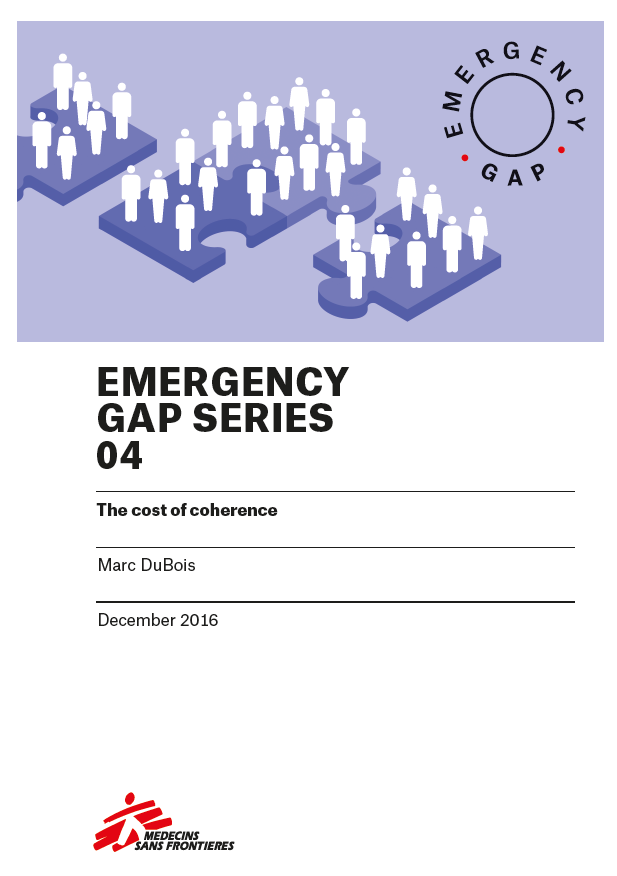Emergency gap: The cost of coherence
Emergency gap series 04
Coherence based on the ‘new paradigm’, announced at the World Humanitarian Summit (WHS), marks a departure from previous initiatives aimed at greater coherence in international interventions. It is a vision of coherence based not on the building of bridges between humanitarianism and other sectors, but on humanitarianism being absorbed by them. This change comes at a time when the global context demands even greater independence if humanitarians are to steer through the interests of politicians, generals or corporate agriculture and towards the needs of people. So, while it may be hard to argue against the concept of coherence, it should be even more difficult to champion a strategy of bureaucratic centralisation, political integration and merger.
This paper questions the basis and wisdom of the WHS’s transforming of humanitarian action into a support mechanism for the Sustainable Development Goals (SDGs), realigning the ultimate humanitarian goal towards ‘ending need’. After setting forth the issue in greater detail, this paper examines these old and new policy fixes through three interlinked flaws:
• Contradiction at the conceptual level.
• Misjudgement of the nature of the problem and disregard for the lessons of history.
• Underestimation of the impact upon a humanitarian sector that is already slow, inflexible, politicised and progressively less able to meet the emergency needs of people in crisis.
The international aid sector must address basic, immediate necessities and simultaneously recognise the fullness of human needs and aspirations. It must work to dismantle barriers and strengthen complementarity across those responding to people affected by crisis. Crucially, it must do so while preserving the distinctions between the humanitarian and other sectors that are critical and fundamental to its identity and effectiveness.


 MSF_EGS04_The cost of coherence_december 2016_0 (1)
MSF_EGS04_The cost of coherence_december 2016_0 (1)